Last Chance to Catch NYC's Holiday Notalgia Train
We met the voices of the NYC subway on our nostalgia ride this weekend!


From the Civil War through the 1980s, around 100 acres of land on the northeastern edge of Queens at Willets Peninsula were used as a federal military base known as Fort Totten. Originally, the fort was constructed to defend the eastern approach to New York Harbor, with its prime position facing the East River and Throgs Neck, Bronx. However, over the course of the war, rapid advances in fortification led to Fort Totten becoming obsolete as a defensive structure. As a result, the fort would then come to mainly be used for casualty support and hospital care.

For years, an intriguing myth surrounding Fort Totten has circulated. According to urban legend, there is an escape passage between Fort Totten and Fort Schuyler in the Bronx, under the area where the Long Island Sound and East River converge.
Though the story is nothing more than conjecture — with the necessary technology to construct such a structure not extant at the time — it is partly based on facts. In the dark bowels of Fort Schuyler is a corridor that appears to go deeper underground. Filled with around 18 inches of water, the tunnel is impassable. However, 150 years ago when it was constructed the sea level would have been 1 ½ foot shorter, potentially leaving its flooring dry. Despite this, the tunnel most likely leads to a dead end. Still, speculators like Fort Totten Urban Park Ranger, Geoffrey Martin believe that the fort’s bricked-up archway might be a cistern or reservoir.
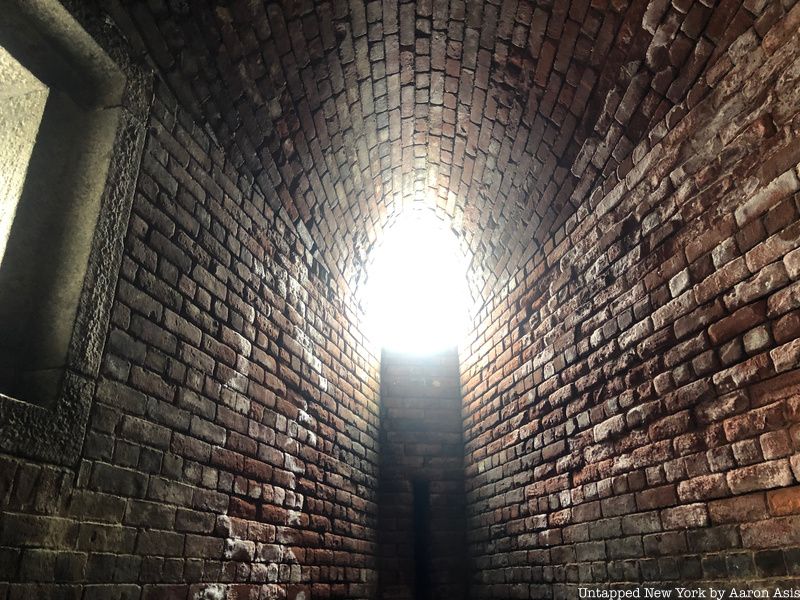
While there may not be a tunnel connecting Fort Totten to Fort Schyler, other intriguing tunnels weave underneath the Bayside structure. Fort Totten’s barrel-vaulted vehicular access tunnel was built in 1870 through the area’s hillside. Made out of concrete, the tunnel linked the fort’s 27-gun battery with the rest of the then incomplete fort. Specifically, it aided in the transportation of ammunition into the Main Magazine, a series of tunnels and vaults near the battery.
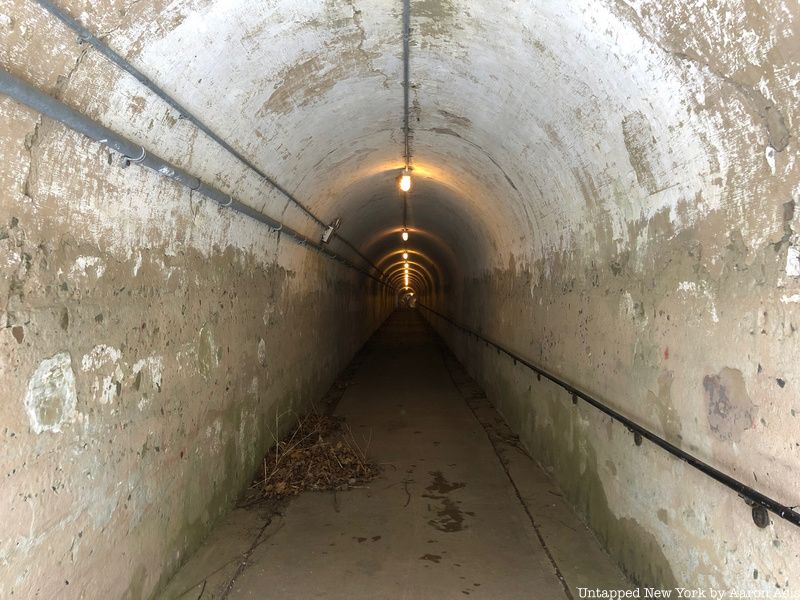
The tunnel was intentionally built on a slope with an angle which would have been useful in the event of an assault on the fort as it would prevent attackers approaching from the water from being able to see what and who was at the end of the tunnel. Its walls are intricately covered with numerous graffiti designs, some being messages which date back more than 100 years. One such phrase etched onto the tunnel is “Remember the Maine,” which became a rallying cry in 1898 after the U.S. battleship Maine was destroyed in an explosion near Havana — which Americans blamed on the Spanish.
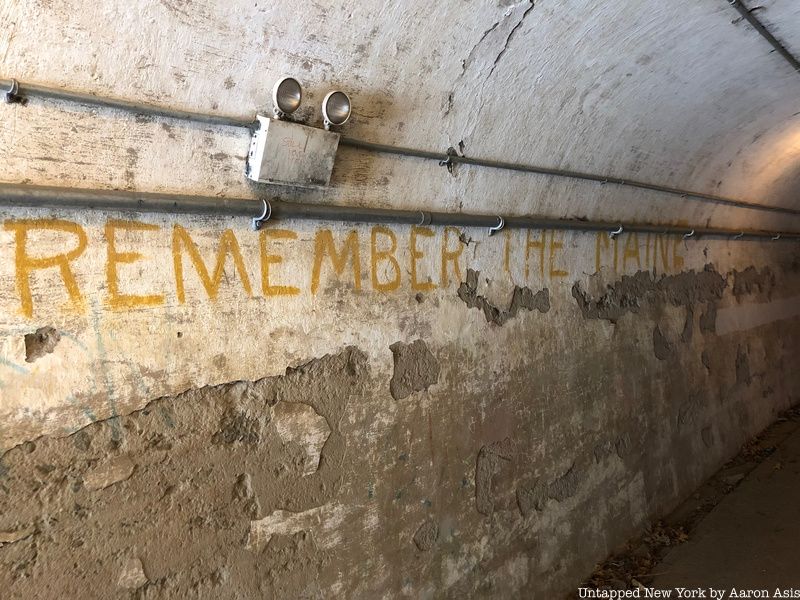
In addition, it has also been reported by the Landmarks Preservation Commission as being the first vehicular tunnel built in New York City. Currently, the tunnel takes visitors from the fort’s water torpedo battery to the visitor’s center.
Throughout its time in operation, Fort Totten served as an influential location. At the start of the Spanish-American War in April 1898, the Regular army garrison at Willets Point consisted of Companies A, B, and C of the Engineer Battalion. On April 4, 1898, an increase in the battalion from 500 to 702 men was authorized by the Secretary of War. Later that month, an additional number of detachments were placed along the Atlantic Coast to help in the planting and operation of field submarine torpedoes in the area’s more important harbors.
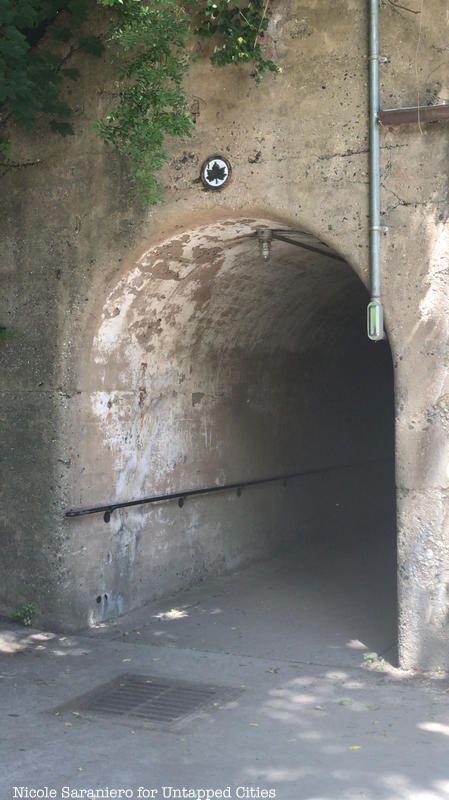
Eventually, to make the battalion more efficient and ready for service in the field, the detachments stationed along the Atlantic Coast were relocated. Over the course of the Spanish-American and Philippine-American wars, companies at Fort Totten came and went, often being stationed at the fort during lulls in the fighting only to be called back into battle a few months later. By mid-September 1898, the engineers would be left as the sole occupants of Willets Point with the entire regiment ordered to be stationed at Fort Slocum.
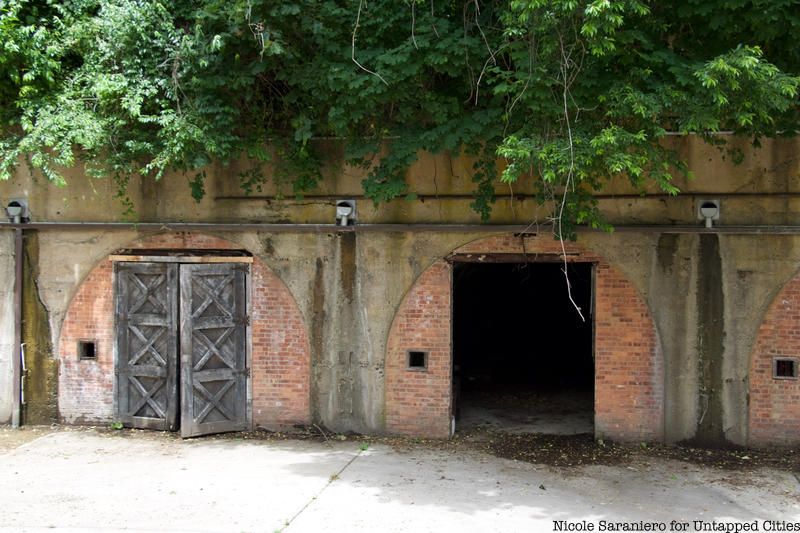
Moreover, Fort Totten’s structure has been updated and preserved at various points. On June 14, 1897, $2,000 was allotted for repairs on the engineer wharf, seawall, and storehouse, as well as for cleaning out sewer under the old masonry fort. Later, during the 1898 to 1899 fiscal year additional repairs would be made to the engineer wharf consisting of a rebuilt battery line on the bluff and new stringers and deck planks. In the same year an electric power plant was installed and upon its completion in 1901, was equipped with a 55-horsepower Worthington boiler, 33-kilowatt direct-couple dynamo, and 64-cell storage battery with type 13 G chloride. A final set of major constructions would occur in 1906 with the building of a three-story wooden structure for usage by the fort’s battle commander.
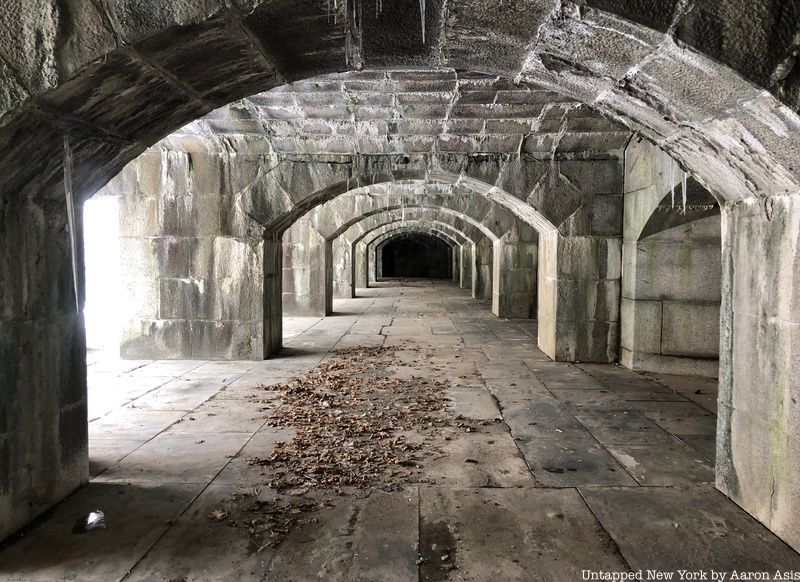
In 1995, Fort Totten’s days as a large-scale military base came to an end when the army announced the partial closure of the base. A year later, the fort and portions of the housing area were turned over to New York City Department of Parks & Recreation. Today, a small portion of the land remains in use by the federal government for the U.S. Army & Coast Guard. As one of New York City’s oldest remnants, Fort Totten now operates as a park.
Next, check out The Top 10 Secrets Of Fort Totten Park In Queens!
Subscribe to our newsletter